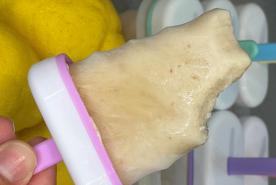What is lead poisoning?
Lead is a natural element found in small amounts in the earth. Lead has many good uses, but too much can be harmful to humans and animals.
Lead poisoning is a serious health problem. It can happen if lead builds up in your body, usually over many months or years. Lead poisoning can be harmful in adults, but is especially harmful in children because they have a small body size and are still growing. Children age six and under are at highest risk.
What causes lead poisoning?
Lead can be found in many places, including old paint, house paint scrapings, water pipes, dirt contaminated by years of car exhaust, toys made before 1976, and toys made in some foreign countries. Lead can also be found at some job sites, and in metal used for some hobbies. Lead used to be very common in gasoline and house paint, but is no longer used in either.
In recent years, unsafe lead levels have been found in the drinking water of many towns and cities in the United States. This has raised concerns about long-term health risks in children and adults who have been exposed to lead through their drinking water.
The lead levels found in things like drinking water, house paint, dirt, dust, and toys are usually low levels of lead. This is often called “mild” or “low-level” exposure. Adults have a lower risk than children for getting health problems from low lead levels. Adult bodies remove almost all of the lead that is swallowed, while children’s bodies only remove about a third.
Can lead exposure harm the kidneys?
Having too much lead in your body can affect all the organs in your body, including the kidneys. When it affects your kidneys, medical experts call it “lead-related nephrotoxicity.” (“Nephro” refers to your kidneys, and “toxicity” refers to poison.”)
Kidney damage from lead exposure is very uncommon in the United States. In fact, most experts believe that kidney damage from lead is rare nowadays, especially in the United States and Europe. It’s believed that lead exposure causes less than 1% of all cases of kidney failure. It is usually related to jobs where workers are exposed to very high levels of lead, such as stained glass artists, metal smelters, and people who work in battery factories or remodel old homes.
The low levels of lead found in drinking water, house paint, dirt, dust, or toys rarely causes kidney damage. But if it does happen, it is usually only after many years of lead exposure (5 to 30 years). Also, it is more likely to affect people who are already at risk for kidney disease, or those who already have kidney disease. In children, however, even mild exposure over many years can lead to health effects later in life, including kidney damage.
How will I know if I have kidney damage from lead exposure?
Unfortunately, most people who develop kidney damage do not have any symptoms. In some people, lead-related kidney damage may show up as protein in the urine, high blood pressure, or an increased risk of gout. If you have been exposed to lead through your drinking water or other sources, and if you have concerns about your kidney function, ask your healthcare provider for:
- A urine test called “ACR.” ACR stands for “Albumin-to-Creatinine Ratio.” A sample of your urine will be sent to a lab. The lab will check your urine for albumin. Albumin is a type of protein that is normally found in your blood. Having albumin in your urine (two positive results over three months or more) is a sign of kidney damage.
- A blood test to estimate GFR. GFR stands for “glomerular filtration rate.” Your GFR number tells you how well your kidneys are working. If your GFR number is less than 60 for three months or more, you have chronic kidney disease.
- A blood test for lead. If you test positive for lead exposure, you will need to take steps to reduce your exposure to lead. The most important thing you can do is find the source of the lead exposure, and remove it.
- A blood pressure test. It may also be helpful to have your blood pressure checked. Lead exposure can cause an increase in blood pressure. Having high blood pressure over many years can lead to kidney damage.
What if I am pregnant?
If you have been exposed to lead at any time, even in the past, talk to your healthcare provider. Lead is stored in the bones. Pregnancy and nursing tends to release lead from your bones into your bloodstream. Too much lead in your blood can:
- Put you at risk for miscarriage
- Cause your baby to be born too early or too small
- Hurt your baby’s brain, kidneys, and nervous system
- Cause you child to have learning or behavior problems
Key points
- Kidney disease from lead is rare. It is less than 1% of all kidney failure.
- Children have a higher risk for health problems from lead exposure. Children aged six or under have the highest risk.
- Lead-related damage to the kidneys may show up as protein in the urine (albuminuria), high blood pressure, or an increased risk of gout. People who appear to have kidney disease, high blood pressure, or gout should have their lead levels checked.
- Most lead-related kidney disease is found in people who work in jobs where they are exposed to very high levels of lead. At lower levels of lead exposure (such as drinking water), the effect on kidney function takes years of exposure (5 to 30 years) and should be modest.
- Excess lead is stored in the bones. Pregnancy and nursing tends to release lead from the bones back into circulation. If you are pregnant, talk to your healthcare provider.
For more information
You can learn more about lead exposure, heath effects, and how to lower lead exposure at:
- United States Environmental Protection Agency
www.epa.gov/lead - U.S. Centers for Disease Control and Prevention (CKD) Web site
www.cdc.gov/nceh/lead

















